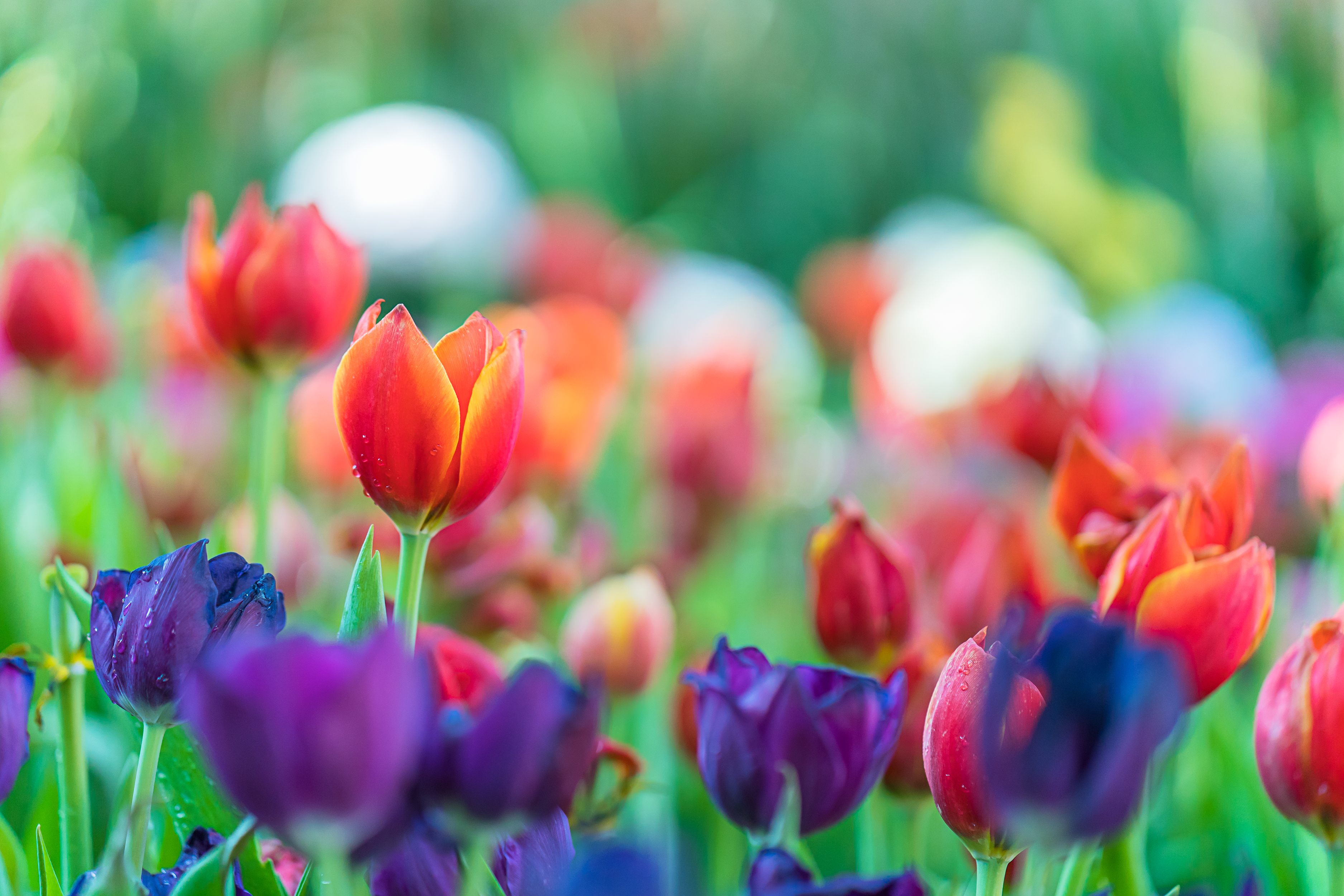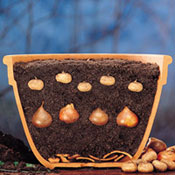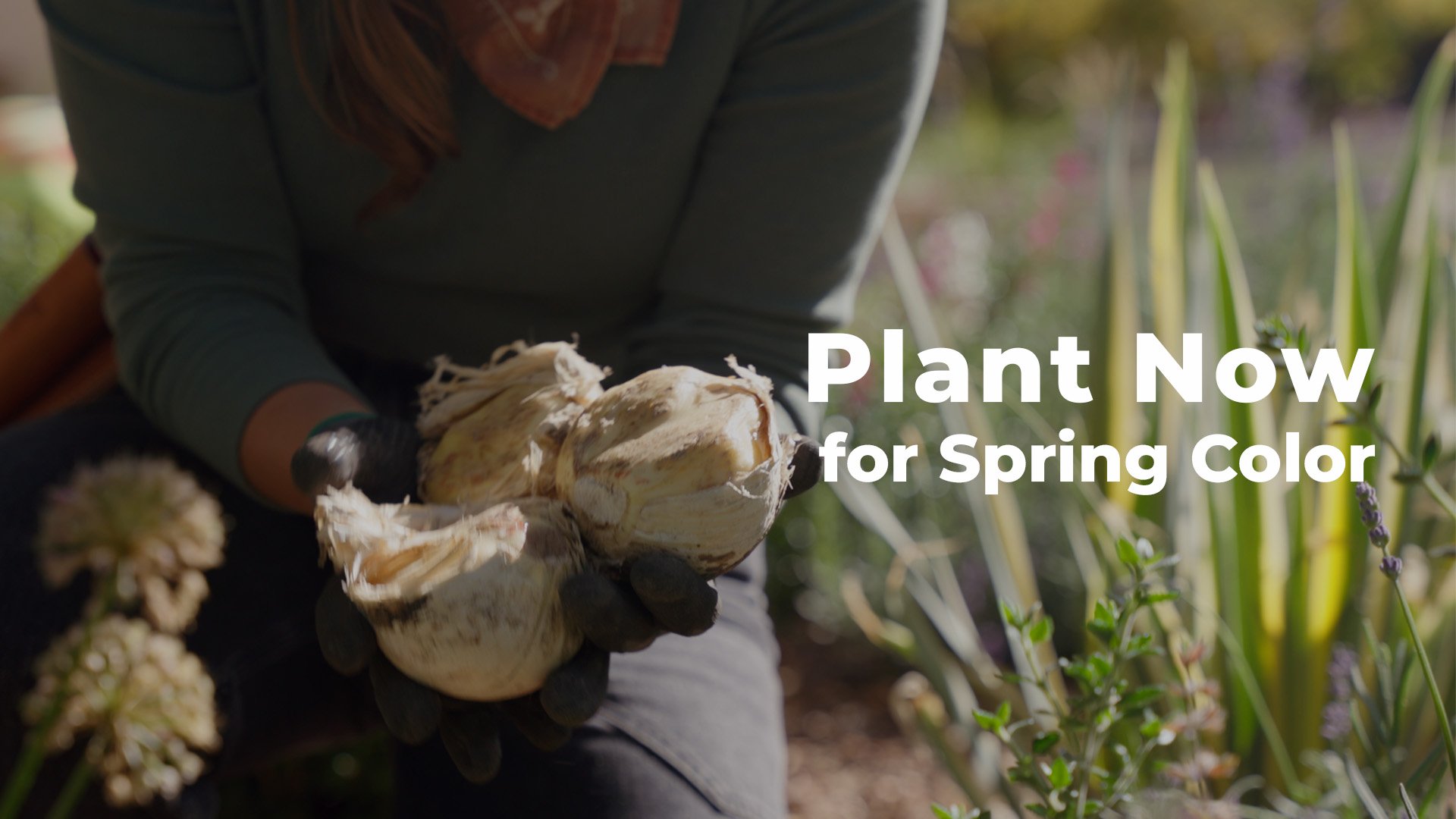Spring Bulb Planting Guide: When and How to Plant Bulbs This Fall for Spring Blooms

While summer’s blooms are fading, now is the time to think ahead to spring. Many people’s favorite part of Spring is seeing all of the blooms that bring color and life back into the landscape. As spring may seem ages away, fall is the time to plant bulbs in your garden beds and containers so they’ll be in full bloom when the spring season begins.
Watch How to Plant Bulbs
Why Fall is the Best Time to Plant Bulbs
Spring-flowering bulbs like tulips, daffodils, and hyacinths, require a cold, dormant period to bloom. To plant in the fall means that they’ll establish their root systems before winter sets in. If you wait until spring, it’s too late. The bulbs won’t have time to chill and develop properly. Bulbs need the cold period to produce strong roots so, once the soil warms, they’ll be ready to bloom.
In areas of the country where temperatures don’t get much lower than freezing throughout the Winter months, planting bulbs in containers and pots is simple. If you live in one of these areas simply plant your Spring bulbs at the same depth in the container as you would in your garden. You can layer bulbs in the pot to get a full and lush look in the Spring. Simply plant the larger bulbs in the lower portion of the planter while staggering the smaller bulbs higher in the container.

Planting Bulbs in Garden Beds
If you are adding bulbs directly to your garden beds, the same timing applies. Here are a few tips to ensure their blooms:
- Choose a Sunny, Well-Drained Spot: Most spring bulbs love full sun and dislike sitting in soggy soil. If your beds tend to hold moisture, mix in compost or sand to improve drainage.
- Loosen and Prepare the Soil: Use a trowel or bulb planter to loosen the soil about 8–10 inches deep. This helps to establish roots and prevents compaction.
- Mind the Depth and Spacing: Follow the same rule as with containers: plant bulbs about 2–3 times as deep as their height. Space them according to the type of bulb. Generally 3–6 inches apart for smaller bulbs and 6–8 inches for larger ones.
- Plant in Clusters for Impact: Instead of planting bulbs in straight rows, group them in clusters of odd numbers (3’s, 5’s, or 7’s). This creates a more natural, layered look when they bloom in spring.
- Water and Mulch: Water thoroughly after planting to settle the soil and encourage root growth. Add a 2–3 inch layer of mulch to help insulate the bulbs and retain moisture through winter.
Protect Your Bulbs During Winter
If the Winter temperatures in your area drop below freezing you will need to move your pots or planters to a protected area. A protected area could be the garage or a shed where temperatures will remain cold but not freezing. During the Winter months your garden soil will freeze if temperatures drop but the soil temperature will always remain higher than the air temperature, protecting your Spring bulbs. Spring bulbs in your pots and planters will not be as protected as they would be if they were planted in the garden. The amount of soil in a pot or container is much less than there would be in a garden. The small amount of soil in pots or containers is not enough to protect your bulbs from freezing temperatures.
There are a few ways that you can protect your pots and containers from the freezing temperatures. One way is to dig a hole in the garden the size of your pot and place the pot in the hole. Once in the hole, use straw to cover the pot creating a straw blanket that will insulate your pot throughout the Winter. Another way to protect your bulbs is to build a protective cloak. Wrap your pot loosely with chicken wire, securing the ends. Then, use straw or rags to fill the gaps between the chicken wire and the pot. This will provide the soil with insulation against freezing Winter temperatures, protecting your bulbs from damage.
Spring Awaits
When spring arrives, your early planning will be worth it. Whether planted in pots or garden beds, bulbs mark the start of a new season offering a natural transition from winter to the growing months ahead.
Contact one of our landscape professionals to help you design and plant your spring garden display before the first blooms of the season.


